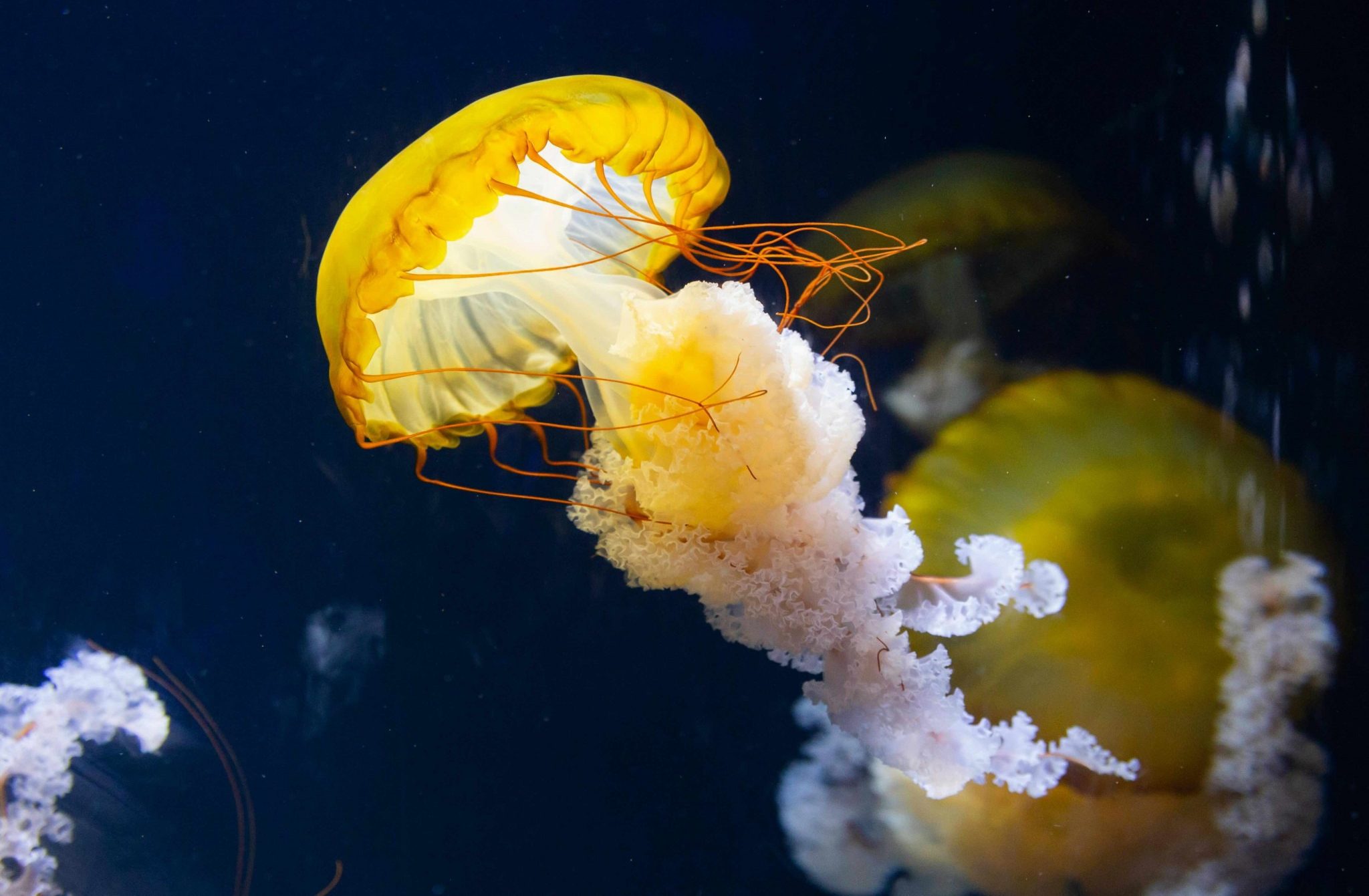Could jellyfish hold the key to immortality?
Have you ever felt like you could’ve done something in your life differently? If you could go back to when you were younger and do it all again, would you change the course of your future? I know I would! My main change would probably be to have actually done some work over the lockdowns, so I didn’t have to cram so much for my exams.
Well, in the deep seas, certain species of jellyfish can do just that! First discovered in the 1880s, the Turritopsis dohrnii or ‘immortal jellyfish’, was found to have a unique regenerative ability. When it undergoes severe stress due to environmental factors, it can revert to a juvenile stage of its life to regrow. Theoretically, this means it could live forever – hence its namesake.
When under stress from factors such as hunger and predation, the jellyfish can go from a medusa stage back to the polyp stage. It does this by sinking to the sea floor, then reaggregating its cells back into polyps
The way it works relies on knowing how these jellyfish grow. Initially, from a fertilised egg hatches the ‘planula’ larva. These larvae float to the surface before eventually sinking to latch onto a solid object like a rock, where they draw in food and grow into a colony of polyps. After becoming a sizeable polyp colony, they can develop into a small jellyfish (ephyra) and then develop into an adult (medusa). When under stress from factors such as hunger and predation, the jellyfish can go from a medusa stage back to the polyp stage. It does this by sinking to the sea floor, then reaggregating its cells back into polyps. What makes this even more interesting is that there’s seemingly no limit to the number of times these jellyfish can do this.
Of course, this is theoretical, and in reality, the jellyfish population isn’t booming because they are prey in both the medusa and the polyp stages of life. But knowing that this way of seemingly prolonging life is possible, is it possible for humans to recreate this process for ourselves?
It goes without saying that our bodies are very different from jellyfish. However, if we assess the process at a microscopic scale, we can determine whether we can emulate it, at least in part.
What actually occurs to change a medusa into a polyp is a process called cellular transdifferentiation. This is when a cell in the jellyfish that’s already specialised for a specific purpose changes into a different type of cell. Although most commonly seen in invertebrates such as these jellyfish, there are rare cases of transdifferentiation happening naturally in vertebrates, too. For example, in newts, they can regenerate a lens from the cells of the iris in their eyes.
Using transdifferentiation, we’ve saved humans in other ways, like producing insulin. In mice, alpha cells from the pancreas were transdifferentiated into insulin-producing beta cells. This opens up the door to a new method of producing insulin that could benefit diabetics around the world
A section of the iris cells, called the pigmented epithelial cells (or PECs), first dedifferentiates to lose any characteristic organelles that are not part of the lens cell. Once this is done, the PECs serve as a blank slate which can be altered to form the lens. Before change can take place, the cells undergo mitosis so that, as well as creating new cells for the lens, some can revert to PECs and remake the altered part of the iris. The stimulus that triggers mitosis is a hormone called thrombin. The newly generated cells begin the process of differentiation to form a vesicle – the structure of the lens. After the structure is formed, the cells differentiate into primary and secondary lens fibres over time, and the fibres produce proteins which crystallise to form the new lens. The whole process takes 25 to 30 days, which is surprisingly fast. This example shows how complex and intertwined the process of transdifferentiation is. So, could such a process be possible in humans?
So far, not directly. However, using transdifferentiation, we’ve saved humans in other ways, like producing insulin. In mice, alpha cells from the pancreas were transdifferentiated into insulin-producing beta cells. This opens up the door to a new method of producing insulin that could benefit diabetics around the world.
In another case, scientists used ex vivo (living tissue outside of a body) samples from human brains to prove that transdifferentiation can occur. The conversion was of glial cells (support cells for nerves) into neurons. This process, if perfected, could become a treatment for neurodegenerative diseases like Alzheimer’s, dementia, and Parkinson’s.
Although we might not be able to relive our childhood and live indefinitely like the immortal jellyfish, through studying the jellyfish and the process of transdifferentiation, scientists can help improve the quality of life in the years that we have ahead of us instead.
Who wants to live forever anyway?

Comments